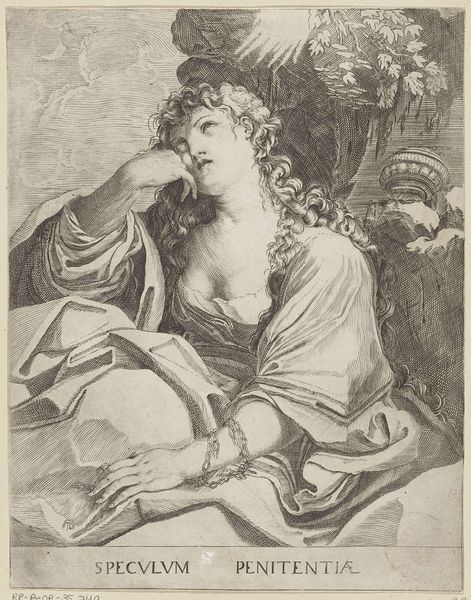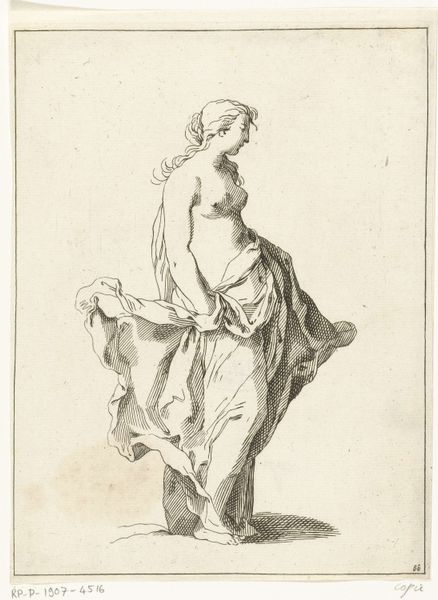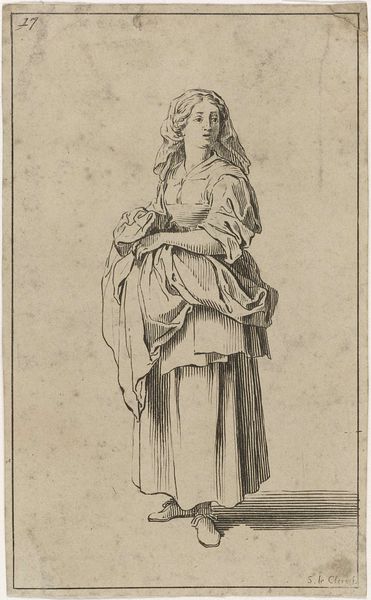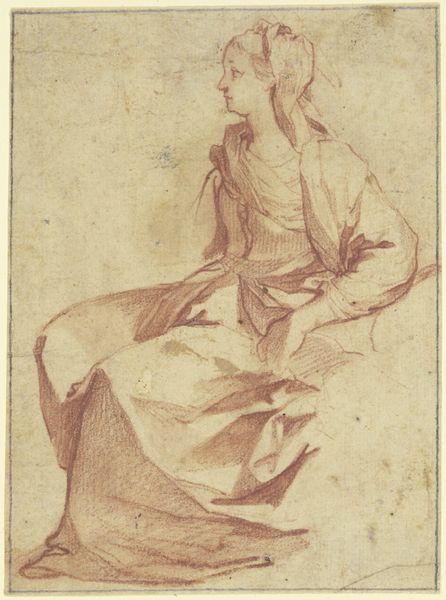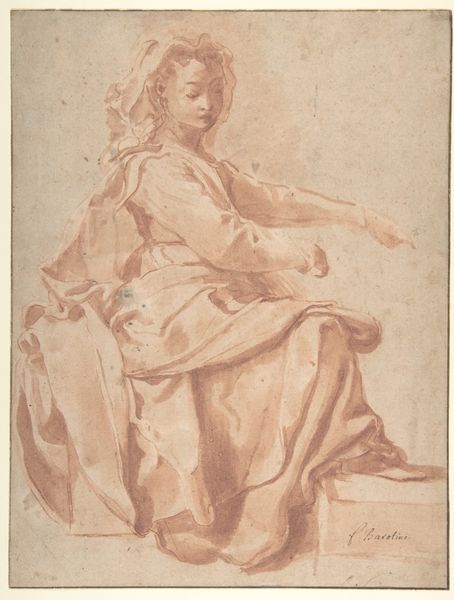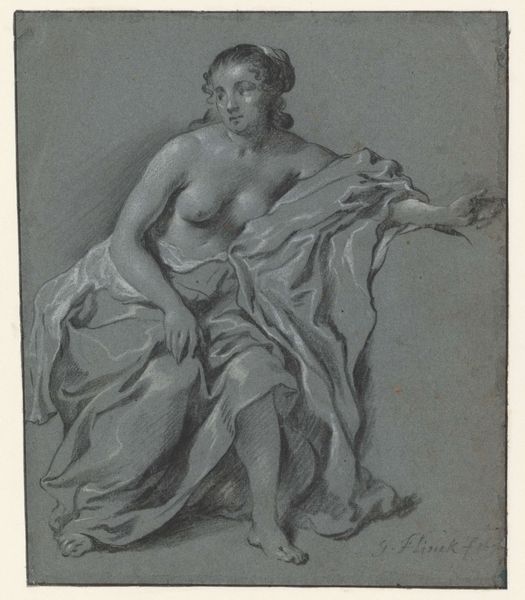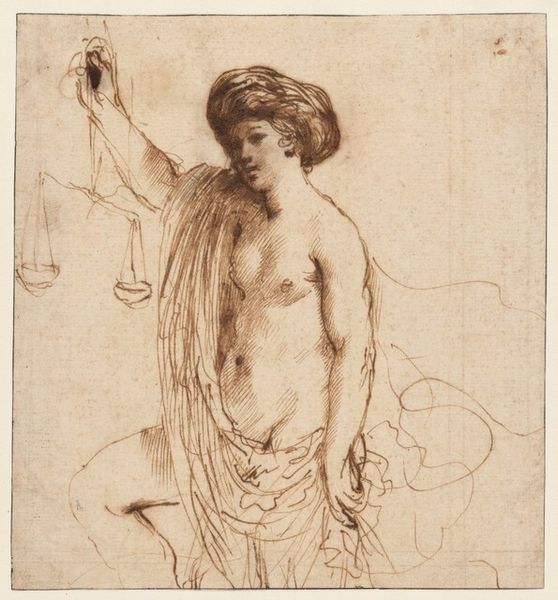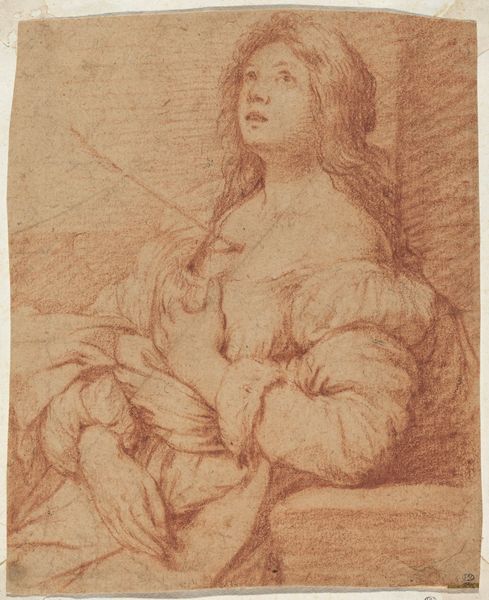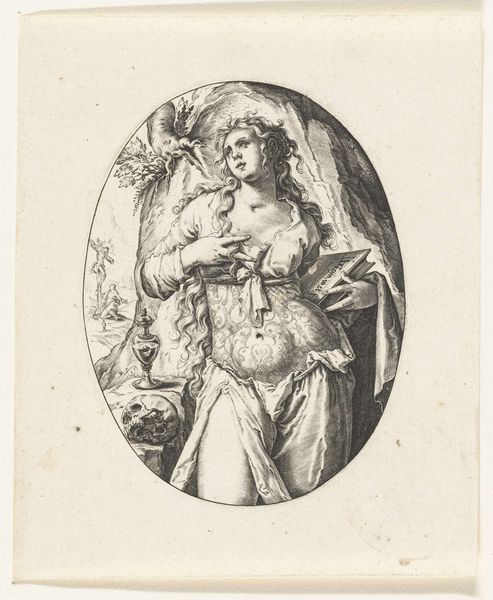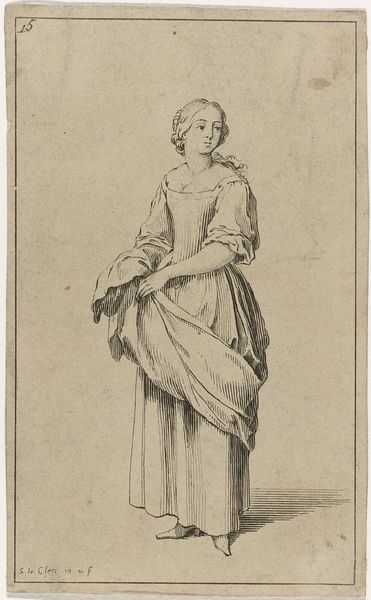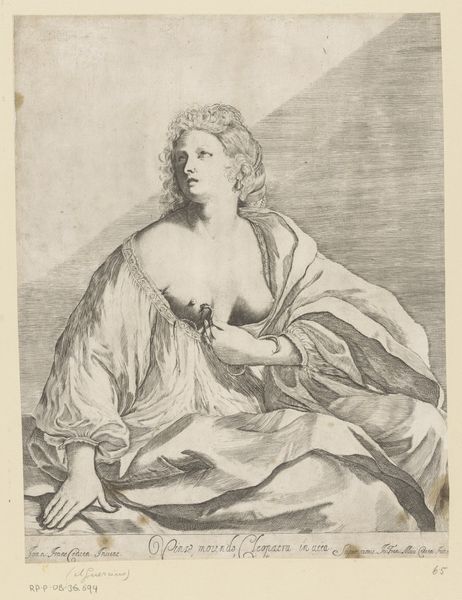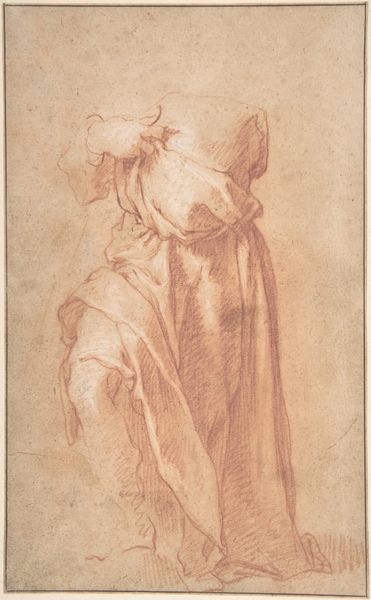
drawing, ink
#
portrait
#
drawing
#
narrative-art
#
baroque
#
charcoal drawing
#
ink
#
portrait drawing
#
history-painting
#
academic-art
Dimensions: 7 5/8 × 6 3/4 in. (19.37 × 17.15 cm) (sheet)17 1/2 × 16 × 1/2 in. (44.45 × 40.64 × 1.27 cm) (outer frame)
Copyright: Public Domain
Editor: Here we have "Lucretia," a drawing from the early 1640s by Guercino, rendered in ink and charcoal. The stark depiction of her suicide feels incredibly intense, but I'm drawn to the contrast between the flowing fabric and the rigid line of the dagger. What elements of the composition strike you? Curator: Formally speaking, the contrast between the dynamism of the drapery and the stoic stillness of Lucretia's form is paramount. Notice how the swirling lines of the fabric create a sense of movement, almost chaotic, which then abruptly halts at the unwavering horizontal of the blade. The chiaroscuro, achieved through delicate washes of ink, further amplifies this tension, doesn't it? Where do you find your eye traveling across the image? Editor: I see what you mean! My eye definitely moves between her face and the dagger. It’s like a visual pathway built by the artist. But isn't there also an element of symbolism here? Her gaze seems directed inward, as if contemplating the act itself. Curator: Indeed. Her introspective gaze serves to internalize the drama. Rather than focusing on the external violence, we are invited to consider the psychological weight of her decision. The formal elements underscore this: the restricted color palette draws us in, preventing distraction and concentrating our attention on the stark reality of the composition and on the drama within the portrait. Consider the almost sculptural rendering of the fabric—does its visual weight not also speak to the weight of her decision? Editor: Absolutely. I hadn’t considered how the weight of the fabric mirrored the weight of the narrative. Thinking about how all these formal elements work together really unlocks another layer of understanding. Curator: Precisely. By analyzing the formal relationships within the work, we can glean insight into the deeper layers of meaning embedded within. It provides a vocabulary for interpreting not just what is depicted, but how it is being conveyed. Editor: This has been very insightful. I will definitely keep in mind what you've taught me as I view and create art in the future. Thank you.
Comments
minneapolisinstituteofart almost 2 years ago
⋮
According to ancient Roman tradition, when the noblewoman Lucretia refused the advances of Tarquin, son of the king of Rome, he threatened to kill her and a male servant and to leave them in a bed together for her husband to discover. To spare the life of the servant, Lucretia sacrificed herself to Tarquin, who raped her. Afterward she summoned her family, swore them to an oath of vengeance, and—the moment depicted in Guercino’s drawing—lifted a dagger to kill herself. The rapid, searching strokes defining the robe, the curving parallels in the shadows, and the stippled dots that define Lucretia’s skin all demonstrate Guercino’s breathtaking skill with the pen. Though renowned today, his drawings were largely unknown to his contemporaries. He made them for his own use and kept them until his death.
Join the conversation
Join millions of artists and users on Artera today and experience the ultimate creative platform.

